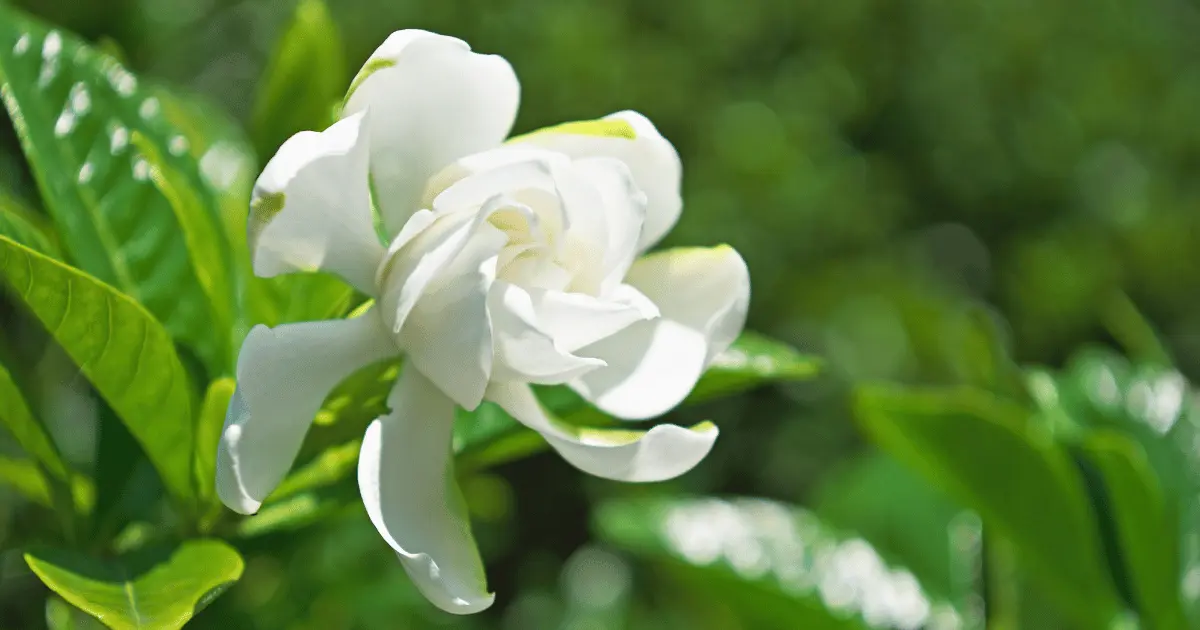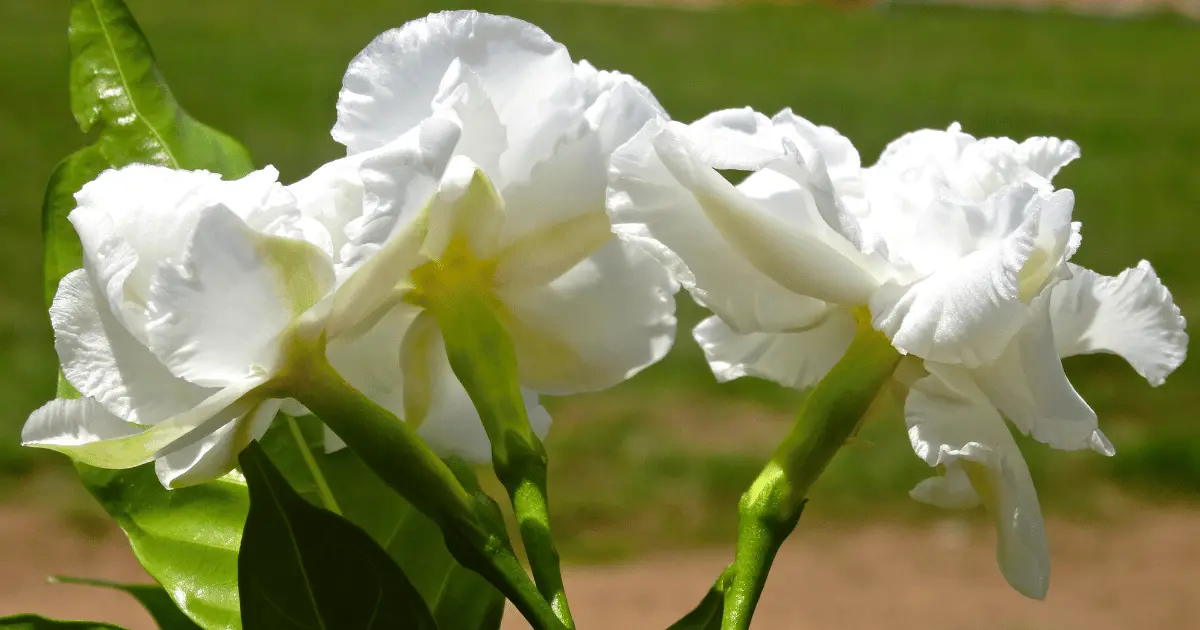Gardenias are said to be one of the most popular flowers in the world, but some may only know them as adornments that are worn in the hair.
They are popular for being worn as fashion statements by brides, bridesmaids, and women in general.
Nevertheless, gardenias are still beautiful flowers kept as garden shrubs or houseplants. Some people like to keep them in their offices.
They are especially loved for their glistening green leaves, soft white and creamy petals, and the heady fragrance they fill the gardens with once in bloom.
Gardenias are heat-loving, irresistible shrubs or trees, but they can be grown in cooler areas. They can be fussy about taking care of, but their exquisite blooms make up for the extra attention they take.
When do Gardenias Bloom?

Gardenias typically bloom in late spring or early summer, but you can see your plant’s flowering season start earlier depending on climatic conditions.
Some types, such as Four Seasons, have a long-lasting blooming season starting in spring. Other gardenias like Jubilation bloom twice – first in spring, then in fall.
How Long do Gardenias Take to Bloom
A gardenia plant grown from seeds will take two to three years before it starts blooming, while one grown from cuttings will begin to flower in a year.
How Long do Gardenia Blooms Last?
Well-maintained gardenias will last for six to eight weeks before gradually wilting. This depends, however, on the blooms’ condition and the gardenia’s variety.
The blooming period also varies depending on the cultivar and can last for as little as six and as long as ten weeks.
As with many flowering plants, you can extend the flowering season by deadheading the flowers.
Orange-red seed pods signal the end of the blooming season. You can clip off the dying flowers before this happens so your plant doesn’t waste energy.
This effort is instead redirected to producing blooms and keeping your plant pretty for much longer.
Use a sharp pair of pruners to cut the old flower above the next leaf.
How to Care for a Flowering Gardenia

Getting gardenias to bud and then bloom is a delicate process. You have to care for them by ensuring perfect conditions.
Even while blooming, they need to be kept in perfect shape. This way, your plant will keep blooming year and year, bringing these brightly colored flowers and delicate fragrances to your house.
The following tips will help your plant continue to flower beautifully this year and after.
Feed Your Plant Regularly
Producing blooms takes up a lot of energy, so it is advisable to feed your plant frequently to keep the gardenia going.
Apply an acid-based slow-release fertilizer to keep the soil pH range from 5.0 to 6.0. Coffee grounds and compost are good materials for soil amendment.
You can also choose to apply bone meal, blood meal, or fish emulsion. Apply once in spring and again in the middle or end of summer.
Give Your Plant a Drink
There is a strong correlation between available soil moisture and the number of blooms on a plant, proving that water is needed to start and maintain flowering.
Water deeply when the top two inches of the soil feels dry, but do not overwater. You can apply organic mulch to the soil to help to maintain evenly moist soil.
Mulching also helps with weed management.
Prune correctly and at the Right Time
As stated earlier, gardenias benefit from a little pruning. Apart from removing spent flowers, you can cut old, less productive stems and uneven branches.
It would be best to wait until the flower has faded or when the plant has finished blooming to remove the spent blooms.
Gardenias usually start putting out new buds for the next season’s flowers by late summer and fall, so do not prune past midsummer.
Maintain a Humid Environment
Keeping your gardenias in a humid environment is a sure way to help your plant produce more robust blooms.
High humidity that mirrors the plant’s native growing regions will improve your chances of having a successful and healthy blooming season with your gardenia.
Container-grown gardenias can be placed over a pebble tray. Gardenias planted in a garden usually get enough moisture from early morning dew.
How to Make Gardenias Bloom
Suppose you have had gardenias for a long time, and they refuse to bloom or suddenly refuse to flower after a successful season. In that case, it might be wise to evaluate your care regimen to determine what you are doing wrong.
Some popular reasons gardenias don’t bloom include a lack of nutrients, low humidity, dehydration, and too much or too little light.
If your gardenia didn’t bloom after the first flowering season, without some replenishment, there might be no nutrients left to bloom in the new season.
Adding a bit of fertilizer is a good way to replenish those resources. However, you cannot use any fertilizer and expect good results.
An excellent choice is Azalea or Camellia fertilizer. This should be done at the right time too.
If you prefer organic fertilizer, bone meal, blood meal, or a fish emulsion is a good choice.
When a gardenia is stressed due to lack of water, it is likely to drop a lot of buds before they open.
If this happens to your plant, increase the water you give your plant. You should provide adequate water, then mulch, to reduce moisture loss.
Increase the humidity around your plant by misting or placing a pebble tray close to it. The evaporating water will increase the moisture in the air.
Maintain a temperature of 65 to 70 degrees Fahrenheit during the day and 60 to 62 degrees at night to reduce bud drop and encourage your plant to set new buds that will stay to bloom.
Lastly, gardenias need bright indirect light to be able to bloom properly. Check the amount of light your gardenia receives if it isn’t blooming to determine if it has too much direct sunlight or is lacking.
For gardenias grown in gardens, place your plants somewhere they can receive the full morning sun and be shaded by the intense afternoon sun.
This way, they can get enough light to bloom and still be protected from the harsh light.
For gardenias grown indoors, you can place them somewhere they will receive bright but indirect light for at least four to six hours.
Rich gardenia blooms are known to impress, and helping a gardener with some information about them will put them in your good books for a while.
